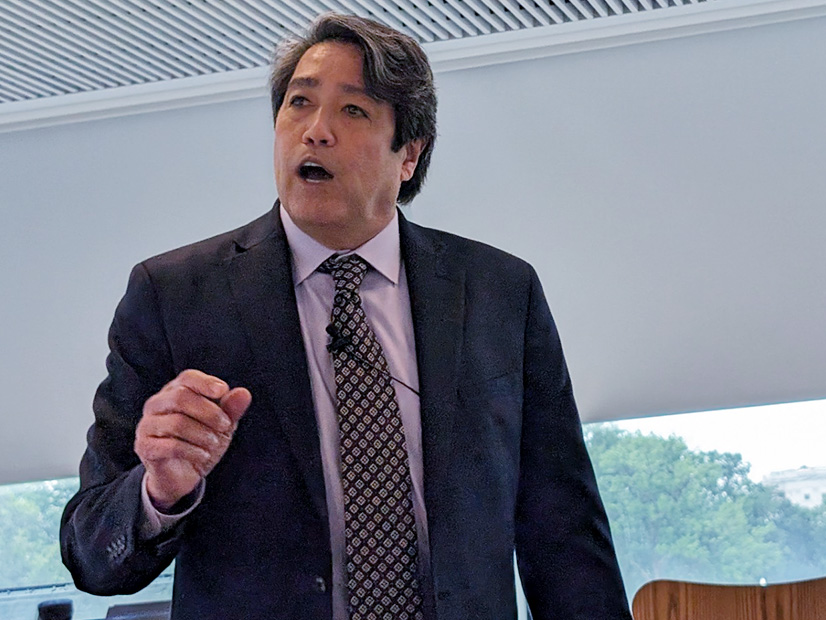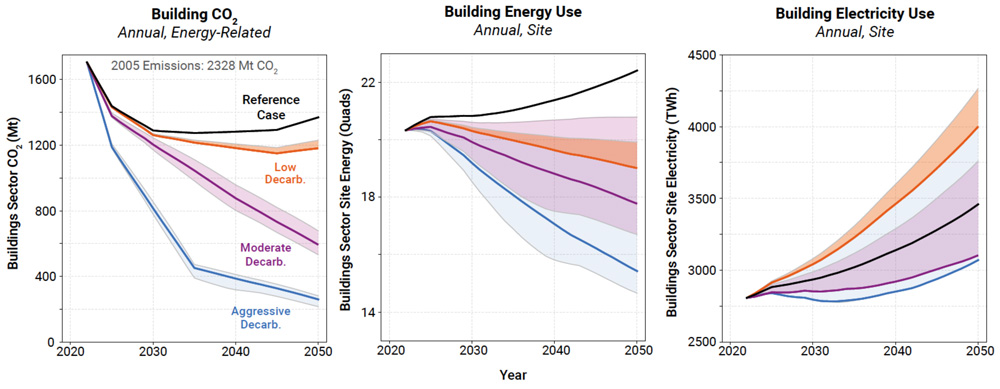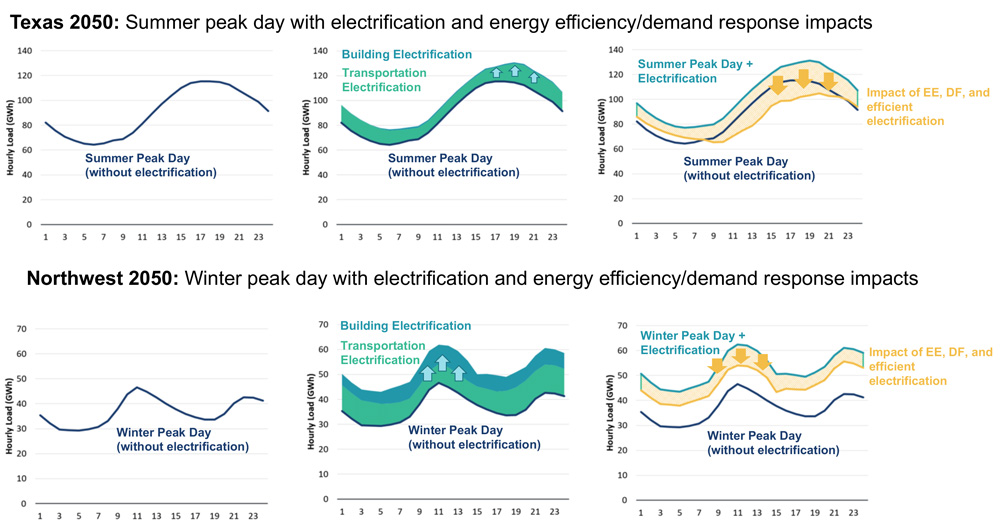
WASHINGTON ― Gene Rodrigues, who heads the U.S. Department of Energy’s Office of Electricity, managed to get through a thundering, seven-minute keynote at the Alliance to Save Energy’s Policy Summit on May 8 without even one de-rigueur mention of the Inflation Reduction Act, Infrastructure Investment and Jobs Act or President Joe Biden’s economic agenda.
Rather, he came to the summit to deliver a ringing endorsement of ASE’s new campaign to convince the energy industry, state regulators and Capitol Hill lawmakers that “demand is the new supply.”
In the past, the energy industry “looked at everything from one end of the microscope,” said Rodrigues, who spent a large chunk of his 23 years at Southern California Edison working on demand-side initiatives. “If you need more reliability, if something goes down and you just need more power, if you need to ensure that everyone has access to the benefits of energy, then you … just build more. We need more, bigger plants. We need more transmission corridors. We need, we need, we need. That is the most inefficient way to think about solving the problem.”
Creating a net-zero economy ― with electrified buildings, transportation and industry ― will mean major increases in energy demand, so using a full array of demand management strategies and technologies will be not only critical, but “obvious,” he said. “It is a basic concept of efficiency, of ensuring that the steps we take are economic, impactful and they reach every single American no matter where he or she resides … It is an expression of common sense.”
ASE CEO Paula Glover similarly framed the combination of aggressive efficiency and demand management as “the backbone of any energy transition that we aspire to have that is going to be equitable, reliable, resilient and affordable.”
Demand is the new supply means “transforming energy demand into … dynamic, responsive supply. [It] is necessary and has to start now,” Glover said in her opening remarks at the summit. “This approach is crucial for stabilizing our grids and distributing energy more equitably across communities.”
Conference panels and speakers presented different approaches to growing demand management as supply, from the consumer and regulatory paradigm shifts needed to scale virtual power plants to new research from Lawrence Berkeley National Laboratory (LBNL) showing the impact of efficiency on regional load curves.
Electrification without aggressive efficiency could result in summer peak demand not only increasing, but shifting to later in the evening, said Andrew Satchwell, deputy leader in LBNL’s Energy Markets and Policy Department. Produced in partnership with The Brattle Group, the study also found roughly half the regions studied could see a shift from summer to winter peaking due to the inefficiency of “a lot of electric resistance building heating,” Satchwell said.
But the study also showed that a combination of aggressive demand- and supply-side measures could slash greenhouse gas emissions in the building sector to 91% below 2005 levels by 2050 without any major increase in building electricity use. Further, leveraging building efficiency and flexibility could provide $100 billion in power system savings per year by 2050, which could offset more than a third of the costs of grid decarbonization.
“We see a strong potential for energy efficiency to reduce emissions in the near term, while the grid is still decarbonizing, that then enables later reductions from … electrification under a harmonized grid,” said Aven Satre Meloy, a computational research scientist and engineer at the Berkeley Lab.
Calling the study a “clear-eyed view of the economic case” for demand-side measures, Rodrigues ended his keynote with a call for industry stakeholders to “work on both ends of the scale to balance the grid. Demand is the new supply does not push anything off the table,” he said. “For those who believe in all-of-the-above, it’s just a way to work smart; work smarter, not harder.”
Start Right Now
While utility executives frequently say that the least expensive kilowatt-hour is the one you don’t use, demand-side initiatives in general have not had a strong profile in the energy transition.
In its 2023 Utility Scorecard, the American Council for an Energy Efficient Economy found that the nation’s 53 largest utilities had decreased their spending on efficiency by 4.9% in the five years since ACEEE’s last utility rankings. That cut in spending resulted in a 5.4% decrease in energy savings and a 19% drop in peak demand reductions. On average, the ranked utilities spent 2.2% of their revenue on energy efficiency.
According to a January 2024 tally from the International Code Council, 13 states have adopted the latest, 2021 International Energy Conservation Code for residential buildings, while only 11 have adopted IECC 2021 for commercial buildings. Two more, Maine and Massachusetts, have adopted the 2021 updates as “stretch” codes.
IECC codes are updated every three years. Six states still are using the 2009 code.
The LBNL-Brattle study finds an aggressive approach to efficiency and demand flexibility will be vital for the U.S. to have any chance of hitting Biden’s goal of cutting economywide GHG emissions to net zero by 2050 without major increases in demand and grid impacts.
The scale of such efforts could be daunting. The building sector accounts for 35% of U.S. carbon dioxide emissions and 74% of electricity sales, according to LBNL. The study looks at a range of scenarios tracking the effects of cutting emissions and electricity consumption through various combinations of electrification and low, moderate and aggressive energy efficiency and demand management.
LBNL’s most aggressive scenario would require 98 million to 141 million fossil fuel or electric-resistance water heaters to be replaced with heat pump water heaters by 2050, as well as high-efficiency retrofits for building envelopes on 109 million existing homes and up to 43 billion square feet of commercial space. Advanced HVAC controls also would be needed for more than 75% of homes and 50% of commercial buildings.
And, Satre Meloy said, “It needs to start happening right now in order to achieve that very dramatic or very favorable building-centric future in 2050.”
Electrification with no or low efficiency would cut CO2 emissions but almost certainly would result in increased electricity demand, the study finds. The effects of moderate and aggressive efficiency are more variable; emissions would go down, but electricity use could rise or fall, depending on a range of factors.
One example, the study’s aggressive efficiency scenario factors in “breakthrough” technologies ― such as super-efficient building envelopes and energy management systems ― are in the research and development phase but expected to reach commercial scale and price points by 2030 or 2035.
Increasingly rigorous building efficiency codes and standards also will be needed, Satre Meloy said. “Failing to do these things is substantially reducing the total avoided emissions” by 40% to 58%, he said.
The effects on the grid also could be substantial, with “inefficient electrification” leading to increased peak and shifting demand patterns, Satchwell said. In Texas for example, the study found that efficient electrification could drive the state’s summer peak below a business-as-usual level. For a winter-peaking system in the Northwest, efficiency could cut in half any increase due to electrification.
Shifting the Paradigm
So, what it will take to get building efficiency and demand flexibility technologies ― like virtual power plants ― to commercial scale and well-integrated into distribution systems? The discussion during a panel on scaling VPPs centered more on paradigm and regulatory shifts than the technologies themselves.
For Jessica Granderson, director of LBNL’s Building Technology and Urban Systems Division, buildings are an “underexploited resource” and the “central hub in the transfer of clean electrons in our energy transition to and from that clean grid.”
“Our buildings have built-in storage already, right in the mass of the building, in the fabric of infrastructure, in the chilled and hot water that we’re using to serve those loads,” Granderson said. “We have the technologies, the communications and the standards now [that] we didn’t previously have to access that built-in storage and exercise it dynamically.”
Mary Sprayregen, global head of regulatory affairs and global market development at Opower, sees a major misalignment between projections of growing residential energy efficiency and demand management and the current reality that about 8% of households are enrolled in utility demand-response programs.
“And that number has not changed over the last several years despite all the attention we are drawing to it,” Sprayregen said. “How do we engage these untapped resources in everyday houses in a way that everybody can participate, but … that is not necessarily controllable, and it’s not necessarily device-based, but it’s behavior-based?”
Opower designs and runs such programs for utilities.
Marisa Uchin, chief strategy and growth officer at Franklin Energy, called for a reimagining of the power system “because we have distributed resources on the supply side hidden on the demand side. We have the opportunity to create the VPPs or to create sources of power that are … on a different size and scale” and can be “distributed any place where potentially demand and supply chains are complex.”
But technology changes at the residential level generally are driven by comfort, upfront cost and a crisis ― the breakdown of a major appliance ― Sprayregen said.
Granderson agreed but called for “changing that paradigm to something that is like where our decisions are system-optimal, and I think, we have to be really cognizant and intentional that that is the change we’re looking to drive. … So, we’re going to think about the ways we combine those solutions to reach everyone in different markets and contexts.”
Another major hurdle for Sprayregen is designing appropriate incentives for utilities to accelerate deployment of efficiency and demand flexibility. Regulatory decision-making is rooted in an inherent conflict between “capital expenditures versus operational expenditures,” she said. “So, how do we get past that?”
Sprayregen, Granderson and Uchin agreed artificial intelligence will be the next critical tool for optimizing the system impacts of energy efficiency and demand management.
“When it comes to policymakers, specifically utility regulators, there has got to be a pathway where software solutions are on par with capital expenditures,” Sprayregen said. “We’ve got to level that playing field.”




